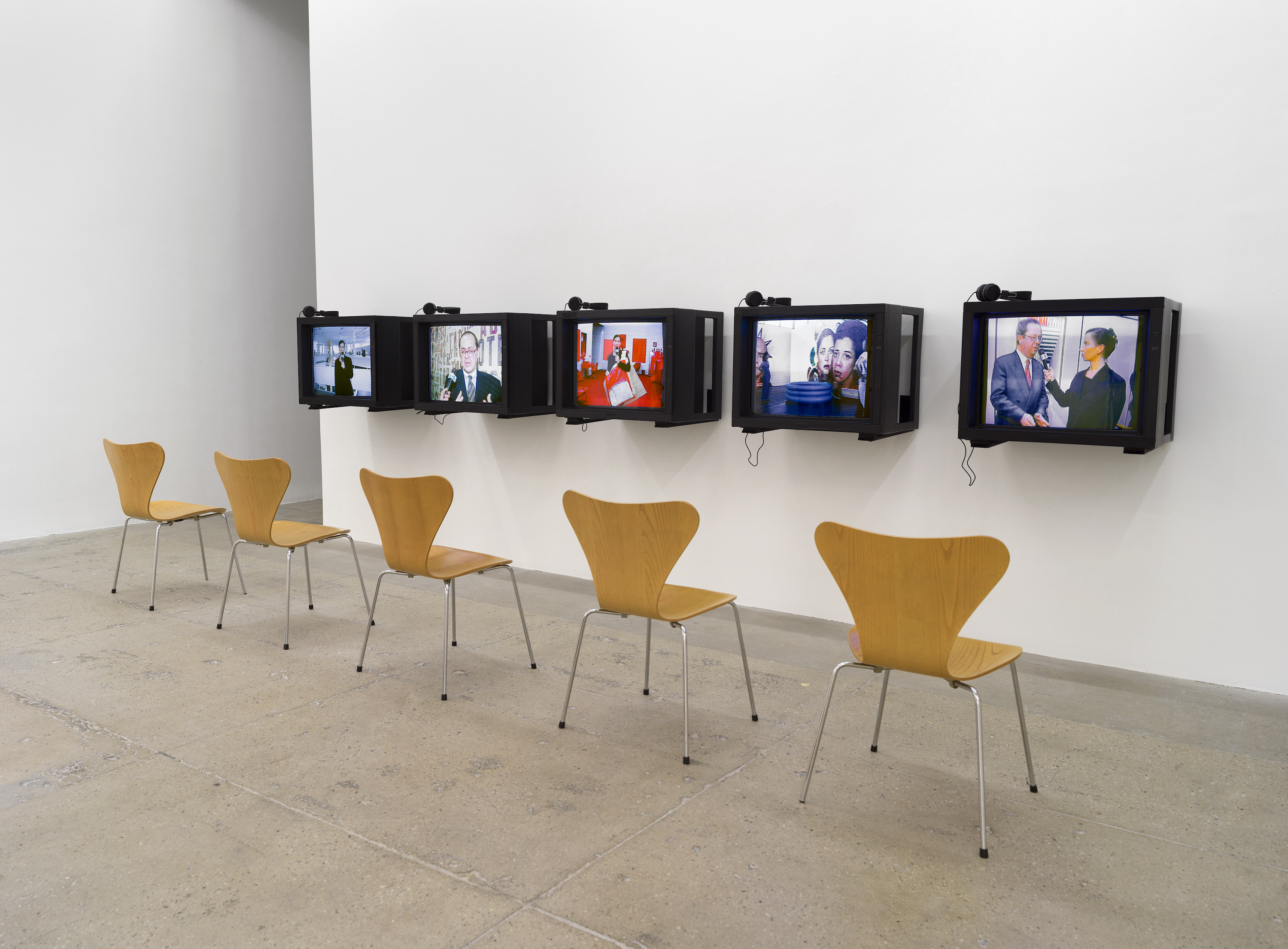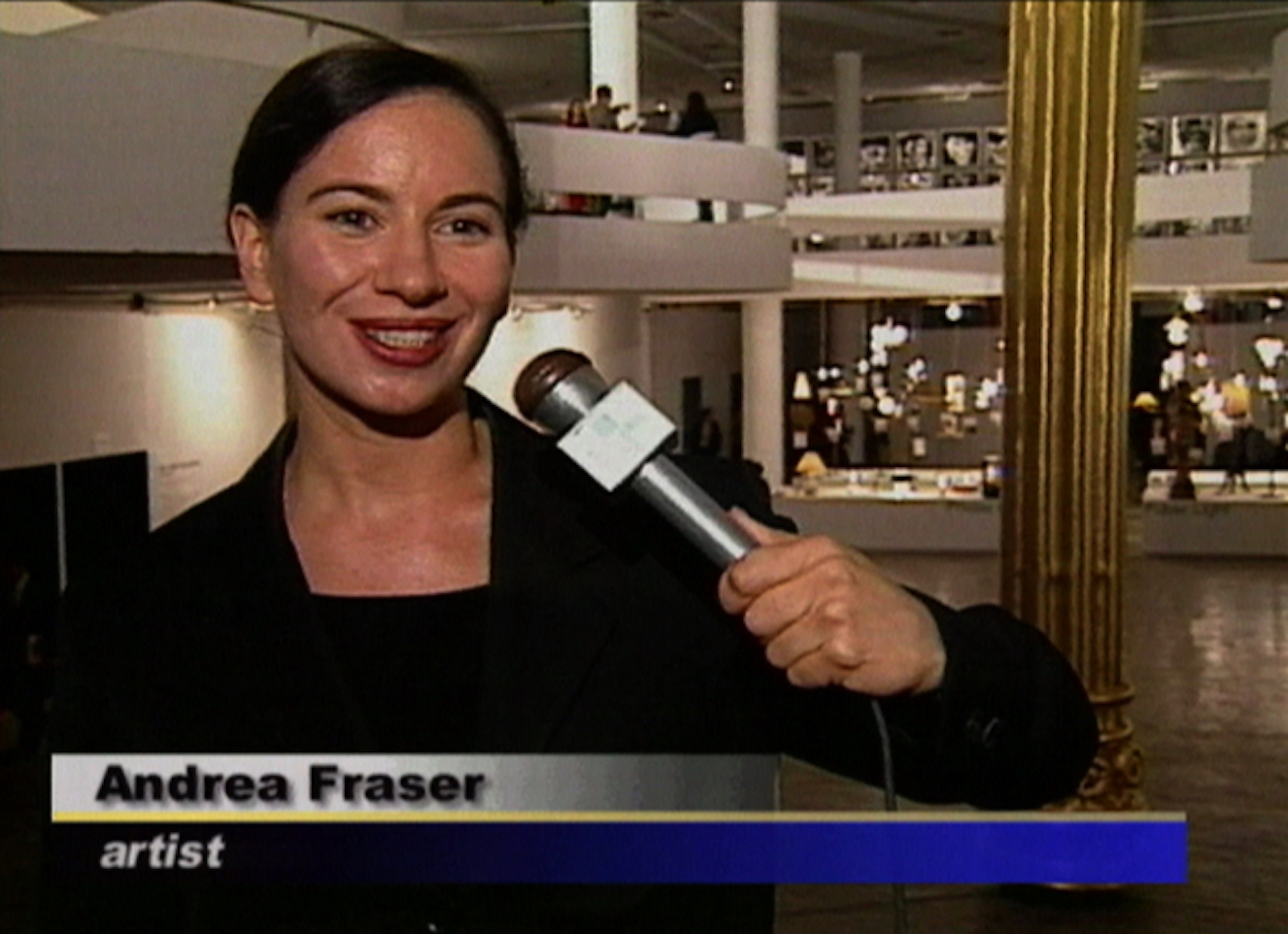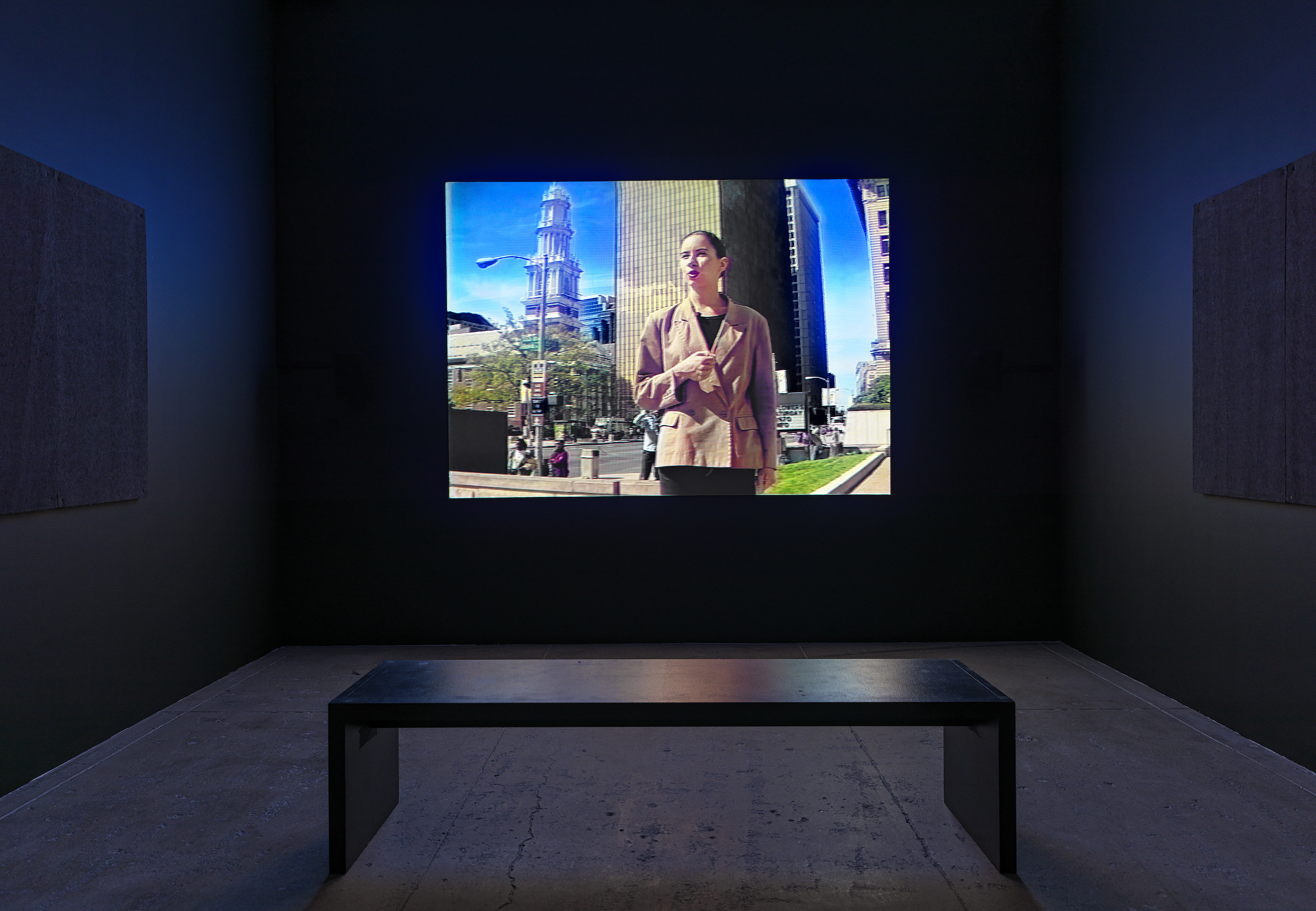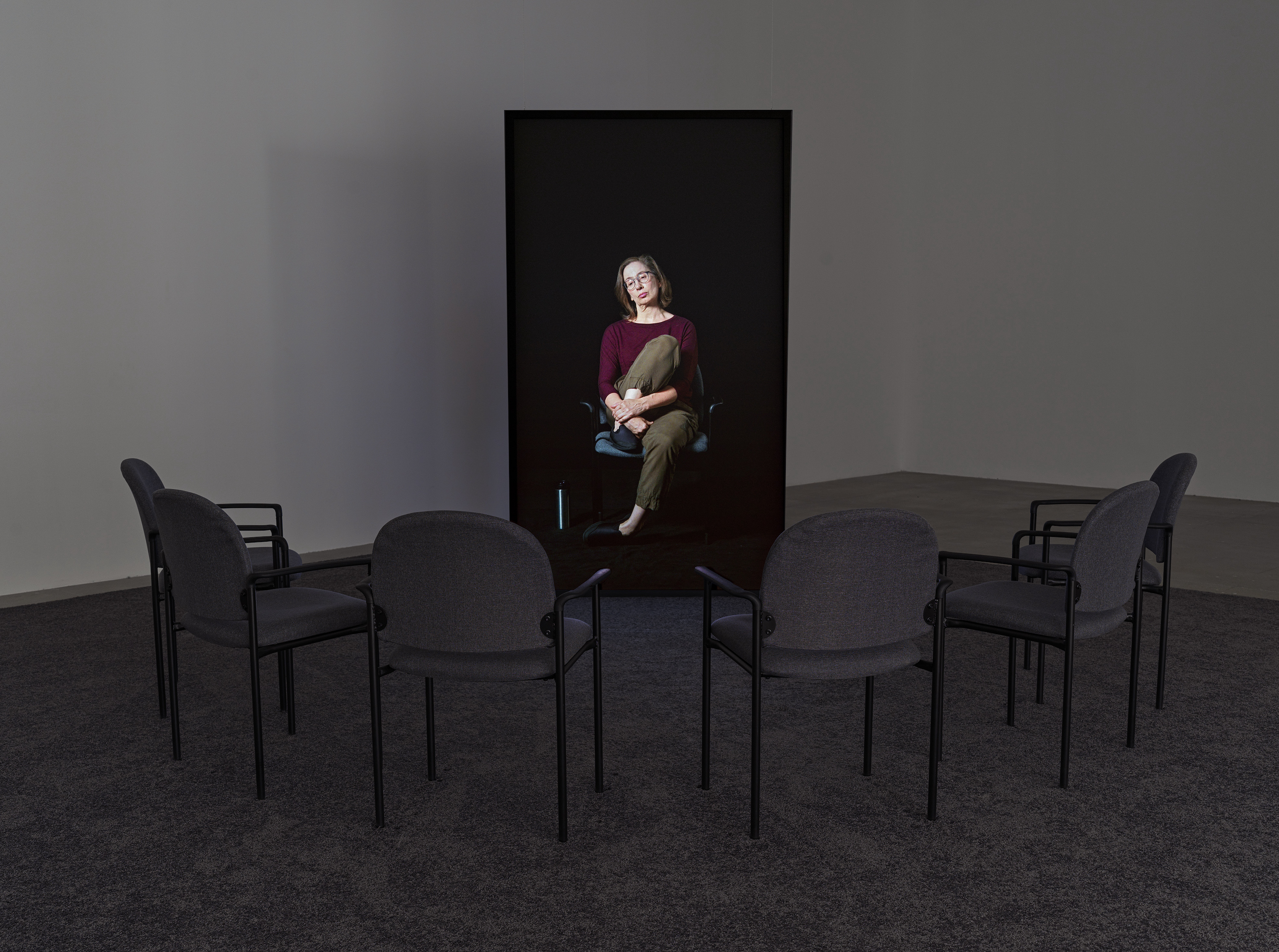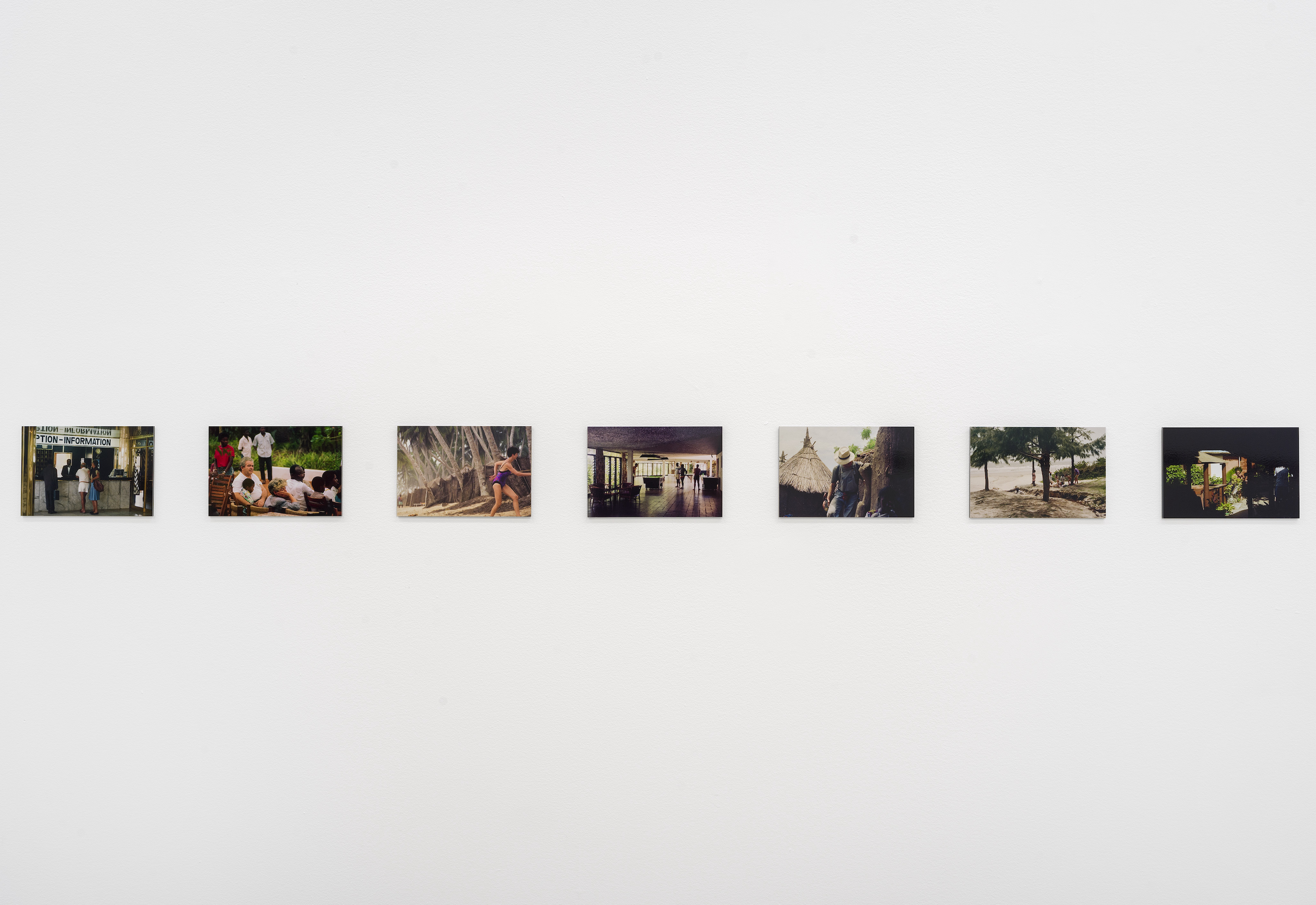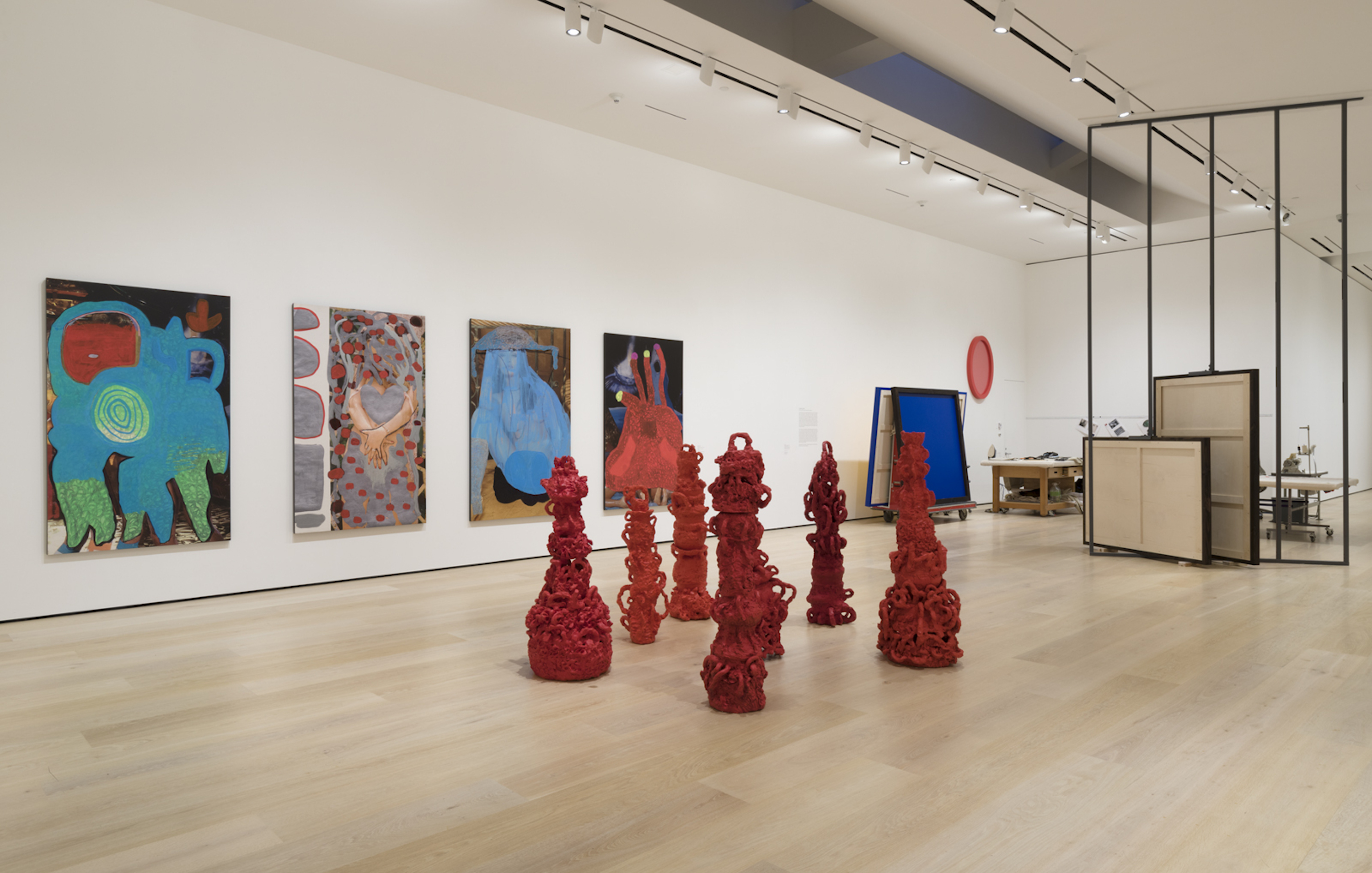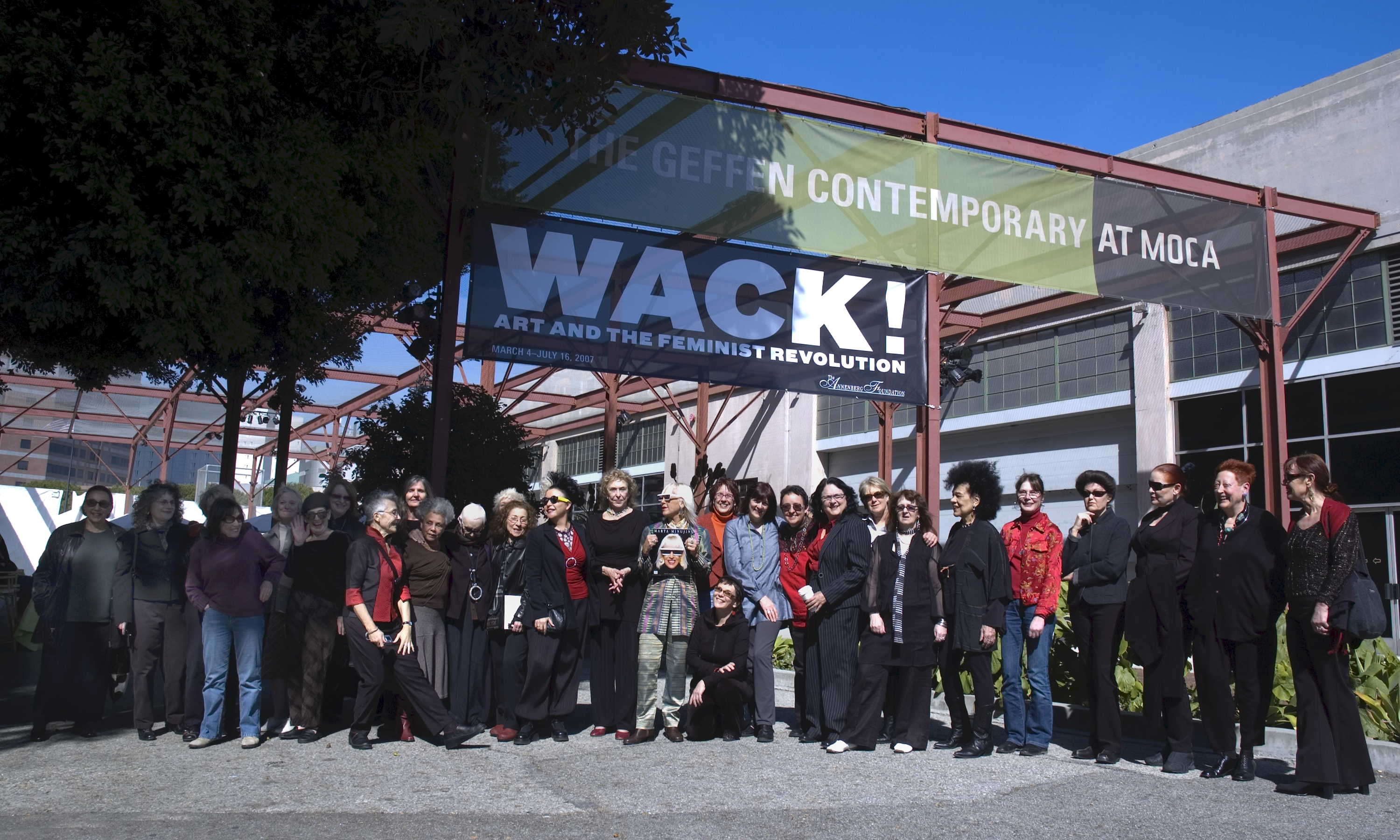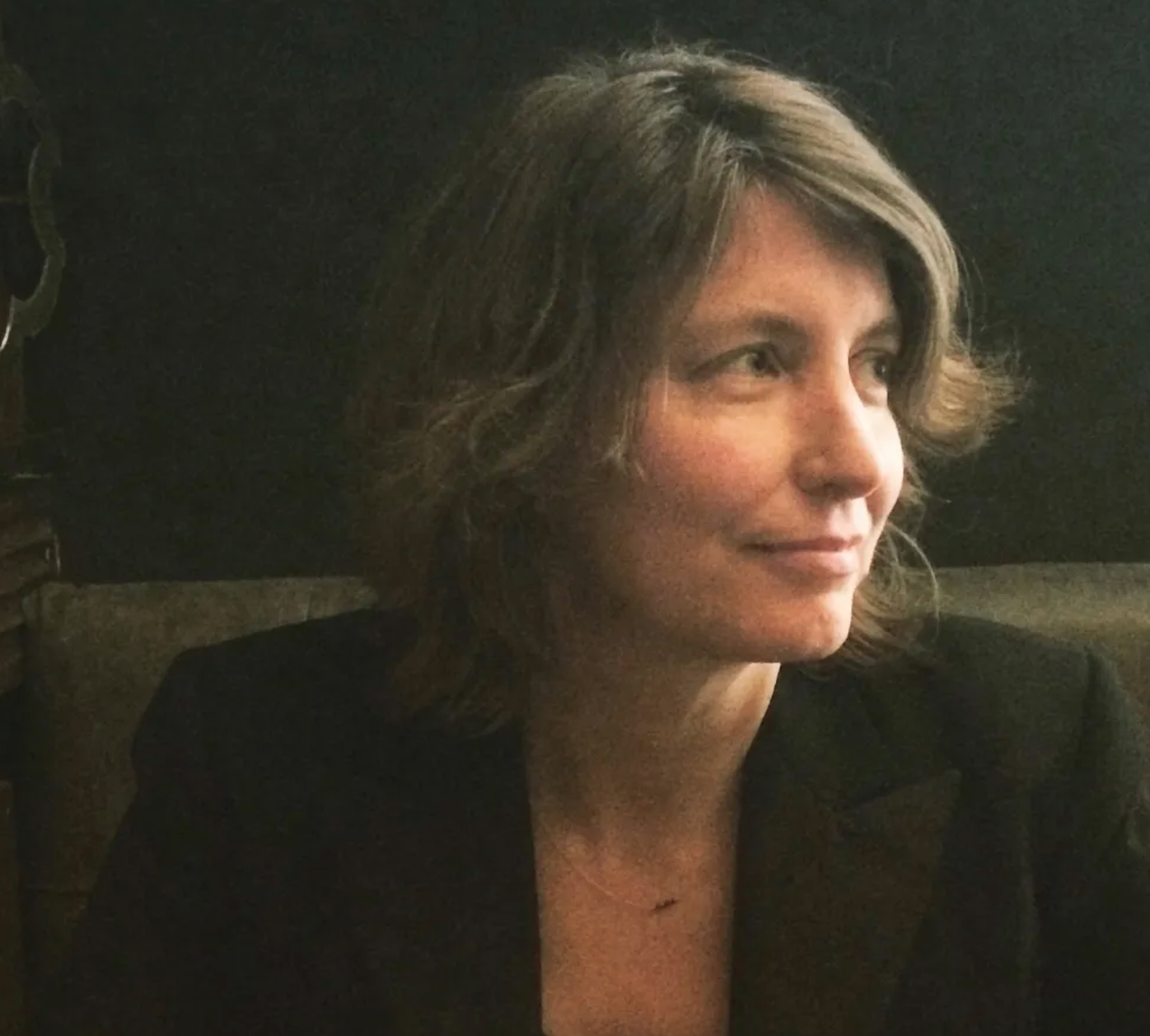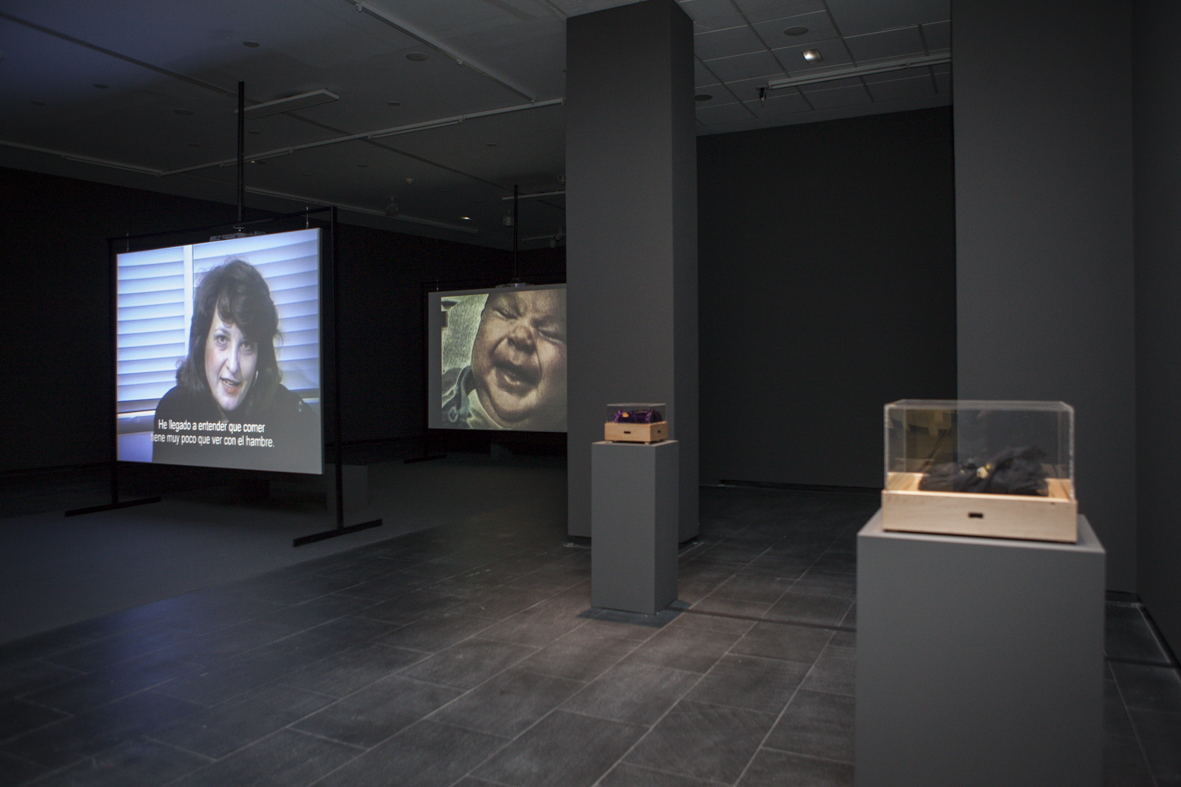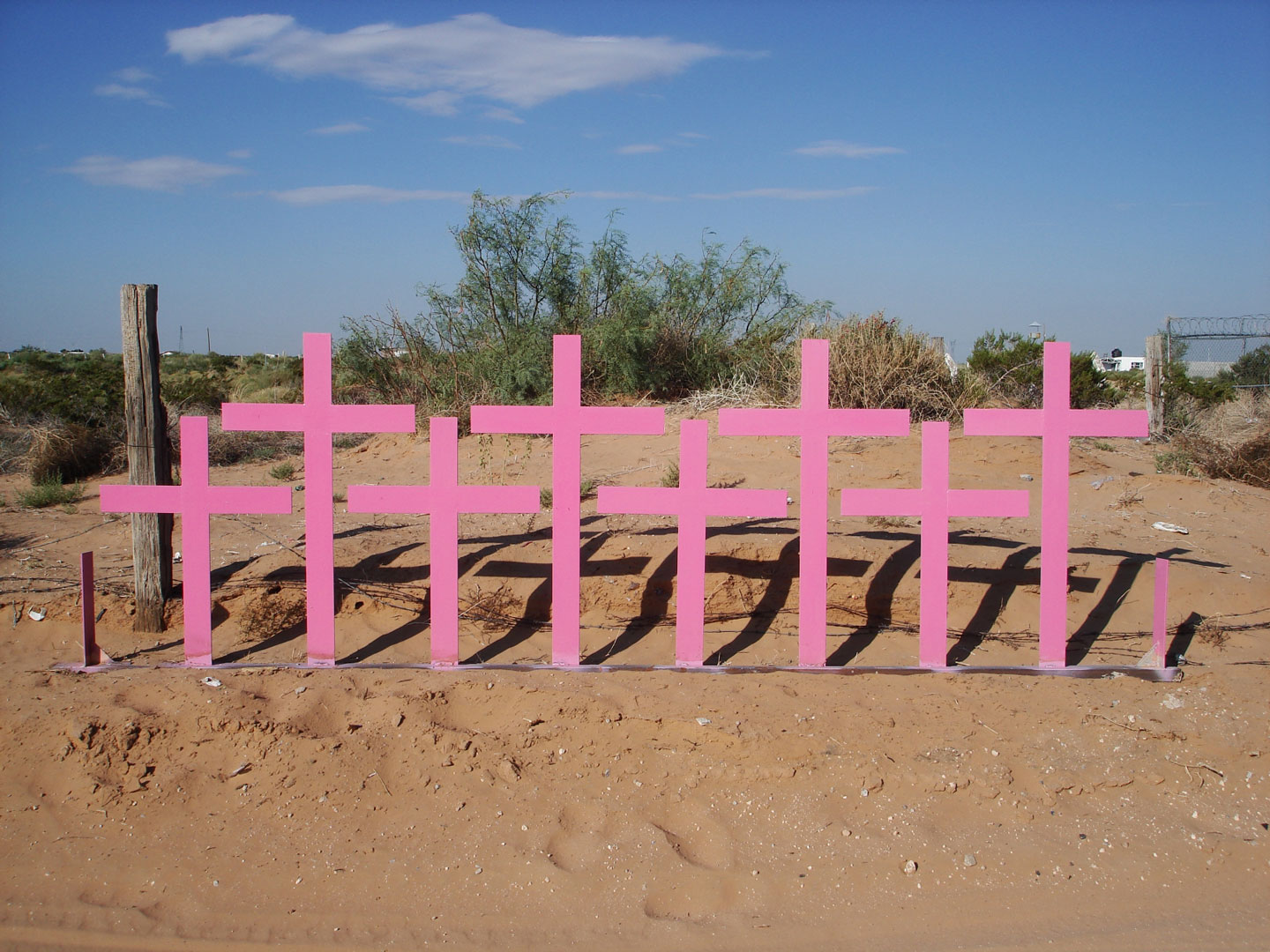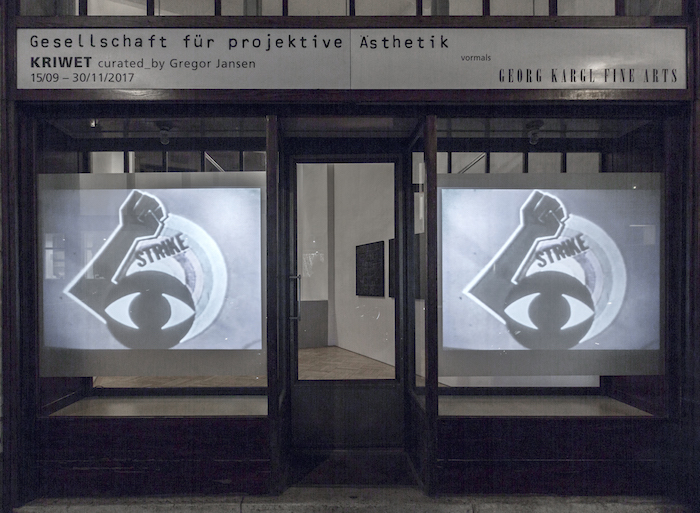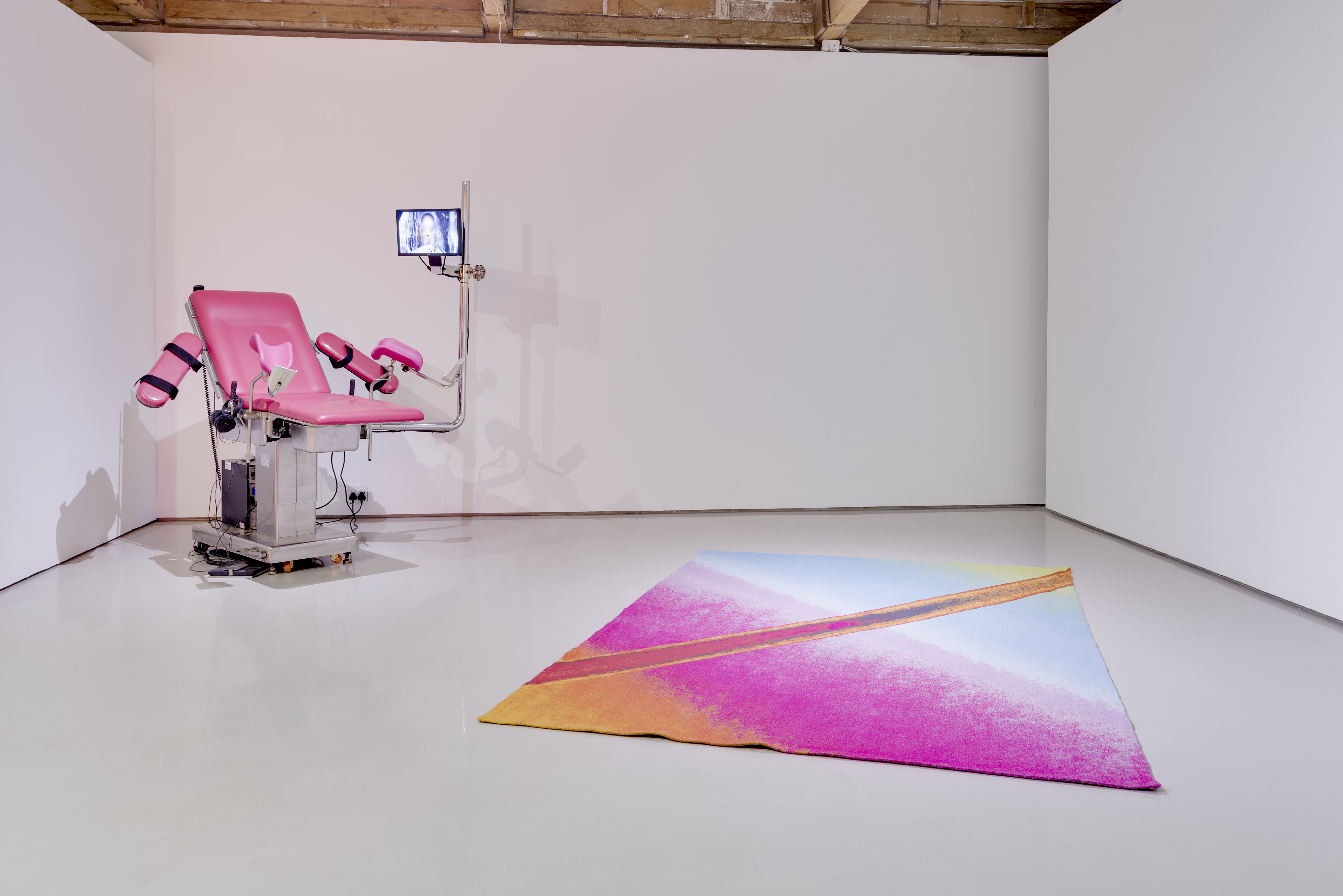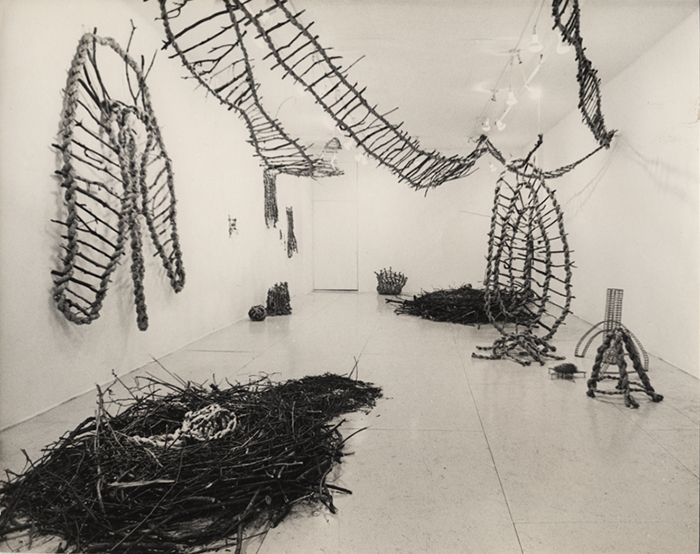January 12–February 25, 2023
In 2005, Andrea Fraser’s consideration of the art world appeared to undergo a transformation—from externalization to embodiment. “If there is no outside for us, it is not because the institution is perfectly closed,” she wrote. “It is because the institution is inside of us, and we can’t get outside ourselves.”1 This sentiment of identity entrapment is nowhere more evident than in her latest work, This meeting is being recorded (2021), in which the shape-shifting artist portrays seven white women in a closed-door meeting about internalized racism. The ninety-nine-minute video—which is based on real conversations and debuted at the Künstlerhaus Stuttgart before traveling to the Hammer Museum in Los Angeles last year—forms the nucleus of Fraser’s first US commercial gallery show in 13 years. The five works on view, from the late 1980s onward, get a new, retroactive reading from her current perspective of grappling with the complex, emotive terrain of racial privilege.
Fraser’s best-known performances offer pitch-perfect approximations of art speak and style, from staid guided tours to overblown acceptance speeches by egotistical artists, threaded with a feminist criticality toward gendered modes of presentation. Two major works from the 1990s, commissioned by the Wadsworth Atheneum and the São Paulo Bienal, demonstrate her sociologist’s ability to seamlessly integrate into the institution and critique it from within. For the video Welcome to the Wadsworth: A Museum Tour (1991), installed in a black-box room just behind the spacious white-cube entryway, she delivers a tour of the museum’s exterior and surrounding Hartford, Connecticut neighborhood.
She comports herself with a patrician, professorial bearing, sporting a double-breasted blazer, pencil skirt, and tight bun that recall her docent character Jane Castleton, portrayed in her breakout satirical tours at the New Museum (1986) and the Philadelphia Museum of Art (1989). This time, Fraser plays herself. Her scripted tour addresses the segregated character of Hartford, appropriating textual material from sources such as official museum literature, patron’s wills, and articles on urban blight. She gradually transitions from an anodyne description of buildings to a disparagement of the Hartford “slums,” in a chaotic collage of perspectives. Fraser drops a single reference to herself, as a “Daughter of the American Revolution” on her father’s side and Puerto Rican on her mother’s, before her delivery starts escalating in its speed and ugliness. Refusing the ease of identification, she instead chooses icy irony to indict the museum’s complicity in a flawed system.
Rather than directly confronting Fraser’s image when walking into the show, viewers instead take in her sculpture Um Monumento às Fantasias Descartadas (A Monument to Discarded Fantasies, 2003)—a massive pile of castoff Brazilian Carnival costumes, like a graveyard of rejected personas. The installation serves as a divider in the large white-cube space, but also acts as a teaser for Reporting from São Paulo, I’m from the United States (1998). This work, Fraser’s contribution to the 24th São Paulo Bienal, consists of five broadcast journalism–style clips for Brazilian TV. Each short video plays on an old-school CRT monitor, nodding to the mass-media news program context for which they were produced. In the brief episodes, Fraser exposes the biennial’s contradictions—the cannibalistic context of the “anthropophagy” theme, the ills of corporate sponsorship, the country’s economic instability in the context of globalism, and the biennial’s efforts to bring the event up to specious “international” (e.g. Eurocentric) standards. Interviewing exhibition officials and cultural ministers, Fraser’s questions are damning, as is her self-scrutiny. In one episode, she interviews herself at the vernissage, extending the mic and stepping in and out of frame. “I feel I am where I’m supposed to be,” Fraser-as-artist says. “That must be satisfying. I envy you,” Fraser-as-journalist responds.
Fraser again embodies the anthropological perspective in her quiet, early photographic series “White People in West Africa” (1989/1991/1993), featuring eighty-two snapshots taken in West African nations. These photographs wrap around the large entrance, opposite the São Paulo works. Here, white people lounge on the beach, wait at a concierge desk, and interact with Black locals. A label identifies only the locations and white subjects, by nationality and occupational status, if known (British tourists, German journalist, French tailor). Fraser herself appears in four images, attributed only as “an American tourist.” Typologically, she is indistinguishable from the rest—aside from the fact that she poses formally and frontally, whereas many of her white subjects seem to be furtively captured.
In feature-length video This meeting is being recorded, Fraser turns the lens on her own racial reckoning in 2020. She deftly switches roles between seven anonymous white women of different ages and backgrounds—herself included. The installation—in a generous, carpeted room at the end of an office-lined corridor—mimics the action onscreen, with six chairs arranged in a semicircle around a screen onto which Fraser’s life-size image is projected. This one-to-one arrangement effectively ensnares the viewer, particularly when she (like me) is a white woman.
Edited from six real-life meetings Fraser participated in about white supremacy, the sessions take the form of a psychoanalytically inflected consciousness raising. My experience of the work vacillated wildly, from empathy to frank embarrassment and emotions in between. At first, I found the piece a study in affects—a withdrawing participant who feels “overextended,” an older woman who feels “scapegoated,” a younger woman who fears her “political commitments aren’t legible,” an odd circling the drain from a participant who wishes to discuss a “case study” from her own life about racist behavior. The members whiplash between fragility and aggression, embrace and rejection of feminist solidarity, intergenerational competition and maternal instincts, breaking down and bowing out. An annotated, edited script on the wall reveals Fraser’s careful notes and narrative construction. The film is broken down into fifteen themed scenes, with each line reflecting a shift in psychological state, like “projecting trauma” and “trying to be the good daughter.”
The participants are anonymized on camera; the script lists them as members A–G. But it’s not hard to identify Fraser, who drops hints to her role as a graduate department head who worries that her students don’t value her, even as she struggles with how to do the work of acknowledging white privilege. Other members remain further cloaked. All of them fret about hard notions such as unconscious fearful behavior of Black men, how to metabolize the frustration of women of color, negotiating seduction and ageism when dealing with white men. Self-reflexive notions about white female weaponized vulnerability seem echoed by Fraser’s ability to cry on cue on camera. Yet Fraser’s tears appear real, and her search for emotional impact has been ongoing. Since her 2001 performance Official Welcome, and after years of crying during lectures, she began scripting elements that would make her tear up. She also resists prioritizing intellectualism against feeling, as she explained in a 2016 interview: “I think theory often ends up impoverishing experience, especially emotional experience, rendering it shamefully dumb and banal while serving to defend against that shame.”2
Clearly, Fraser remains committed to theory, but this new work pushes an endgame of both attention span and emotional expectations for the audience. And it is messy—the antithesis to the literally and psychologically buttoned-up guide she played in the Wadsworth piece. Overall, Fraser’s work seems poised to ask for her viewers to own their shame, as well as consider how emotional manipulation might also be part of internalized institutional work. It’s a tougher ask than acknowledging the absurdities of artspeak and biennialism. Perhaps now we, the white-majority art audience, are in a position to acknowledge the ways that we not only inhabit the institution, but reproduce it.
*This article was amended on April 24, 2023 to reflect the fact that This meeting is being recorded debuted at the Künstlerhaus Stuttgart, not the Hammer Museum in Los Angeles. The work was co-commissioned by the two institutions.
Andrea Fraser, “From the Critique of Institutions to an Institution of Critique,” Artforum (September 2005), https://www.artforum.com/print/200507/from-the-critique-of-institutions-to-an-institution-of-critique-9407.
“Andrea Fraser with Thyrza Nichols Goodeve,” The Brooklyn Rail (April 2016), https://brooklynrail.org/2016/04/art/andrea-fraser-with-thyrza-nichols-goodeve.
